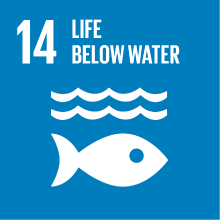ANALYTICAL CHEMISTRY LABORATORY AND INSTRUMENTAL - MOD.1
- Academic year
- 2020/2021 Syllabus of previous years
- Official course title
- CHIMICA ANALITICA STRUMENTALE E LABORATORIO - MOD.1
- Course code
- CT0018 (AF:316184 AR:177702)
- Teaching language
- Italian
- Modality
- On campus classes
- ECTS credits
- 6 out of 12 of ANALYTICAL CHEMISTRY LABORATORY AND INSTRUMENTAL
- Degree level
- Bachelor's Degree Programme
- Academic Discipline
- CHIM/01
- Period
- 2nd Semester
- Course year
- 2
- Moodle
- Go to Moodle page
Contribution of the course to the overall degree programme goals
The course is divided into two modules (defined as Module 1 and Module 2), each of them divided into theory lessons and laboratory exercises. Both modules have common training objectives listed below:
1. To provide knowledge of the general principles on which the instrumental analytical techniques most commonly used in chemical analysis laboratories are based.
2. To provide knowledge on the functioning of the instrumentation and on the modality of reading the responses obtained from the different types of instruments and their correlation with the theoretical aspects dealt with.
3. Develop critical sense that allows students to evaluate the potentials, advantages and limitations of the various instrumental analytical techniques studied.
4. Introduce the students to the conscious evaluation of the role of instrumental analytical methods in the specific field of quality control.
5. Develop skills in the evaluation and reliability of an analytical data.
6. To develop manual skill, experience and autonomy in dealing with experimental instrumental analytical problems, both alone and in small work groups.
7. Develop skills to apply an appropriate experimental approach to scientific investigation.
8. Develop skills in collecting, organizing and processing experimental data and presenting them through a written report in a contextual scientific language.
9. Develop the ability to critically interpret and evaluate the experimental results in accordance with the theoretical principles that underlie the techniques used.
The expected results are defined according to the different contents of the two modules of the teaching of Instrumental Analytical Chemistry.
Expected learning outcomes
A) Knowledge and understanding of the fundamental principles of spectroscopic and electrochemical analytical techniques, of the laws on which they are based and of the equations that express them.
B) Knowledge and understanding of the elements that make up the instruments with which the spectroscopic and electrochemical analytical techniques are carried out.
C) To know the main characteristics of the process of acquisition and processing of experimental data, in particular concerning spectroscopy and electrochemical instrumentation.
2. Ability to apply knowledge and understanding
A) Ability to use the laws and concepts learned for the choice of analytical instrumental techniques for the resolution of an analytical problem.
B) Ability to understand the instrumental aspects and their connection with the theoretical basis of an instrumental analytical method.
C) Ability to collect experimental data (alone and / or in groups) and to process results consistently in the final results, to be made explicit by writing a scientific report.
D) Ability to understand the instrumental aspects and their connection with the theoretical basis of an instrumental analytical method.
3. Ability to judge
A) Ability to express a judgment on the application of a specific technique in a specific context.
B) Ability to perform a critical evaluation of the experimental results by recognizing possible errors and then propose alternative methods.
C) Ability to evaluate the logical consistency of the functioning of the instruments.
D) Ability to recognize errors through a critical analysis of the applied method.
4. Communication skills
A) Communicating the knowledge learned and the result of their application using an appropriate language, both in oral and written.
B) To develop the ability to work in a team, interacting with the classmates in a respectful and constructive way, assuming responsibility for their role in the team and fully respecting all the safety and prevention regulations in force in the chemical laboratory.
Pre-requirements
Contents
1. General introduction to instrumental analytical methods. Principles of amplification and measurement of signals. Signal and noise. Detection limit. Standardization, calibration, dynamic range, sensitivity and selectivity.
2. Introduction to spectrophotometric methods. Electromagnetic radiation. Quantitative aspects of spectroscopic measurements. Instrumentation for optical spectroscopy.
3. Introduction to atomic spectroscopy. Absorption spectroscopy, emission and atomic fluorescence. Sample atomization techniques.
4. Molecular spectroscopy: Introduction to molecular absorption spectrophotometry in ultraviolet and visible. Components of the instrumentation. Application of UV-vis molecular spectroscopy. Quantitative analysis.
5. Introduction to electroanalytical chemistry. Recall of the fundamentals of electrochemistry: electrochemical cells, cell potential, Nernst's law. Types of electrochemical methods of analysis.
6. Potentiometric analytical techniques: general principles; metal, membrane, ion-selective and enzymatic indicator electrodes; reference electrodes. Instruments for measuring cell potential.
7. Voltammetry: general principles. Excitation signals and instrumentation. Chronoamperometry - Cottrell equation. Cyclic voltammetry - Randles-Sevcik equation. Voltammetry applications.
Laboratory exercises:
1. Atomic spectroscopy experiments: microwave plasma atomic emission spectroscopy.
- part a) introduction to the use of atomic spectroscopy instruments. Calibration of the instrument. Construction of a calibration plot. Wavelenght choice.
- part b) quantitative analysis: determination of analytes of environmental or industrial interest in different matrices with the calibration plot method.
2. UV-vis molecular spectroscopy experiments:
Part a) qualitative analysis of the absorption spectra of colored substances in aqueous solution. Analyze the molecular absorption spectrum in the visible of some colored substances in aqueous solution (KMnO4 in acidic environment (H2SO4) and bromothymol blue in acid, neutral and basic environment) and correlate the color corresponding to the maximum wavelength range absorption with the color (complementary) observed by the human eye.
Part b) quantitative determination of the nitrous nitrogen (N-NO2) contained in water samples by UV-Vis absorption spectrophotometry using the Griess reagent and the calibration plot method for quantification.
3. Electrochemical experiences:
Part a) potentiometry: preparation and analytical use of electrodes of first and second species (Ag/Ag+ and Ag /AgCl). Measurement of the cell potential and verification of its variation as a function of the concentration of Ag+ and Cl-.
Part b) Cyclic voltammetry: study of the voltammetric behavior of ferricyanide ion on glassy carbon electrodes (GC), verification of diffusive control process, application of cyclic voltammetry to quantitative determination of the concentration of ferricyanide in an unknown sample.
In all the topics developed and in the laboratory activities, emphasis will be given to the aspects of economic and environmental cost related to the application of the instrumental analytical techniques studied. The choice of analytical techniques and the development of new methods should take into account the issue of sustainability.
Referral texts
- Skoog D.A., West D.M., Holler F.J., Crough S.R., Fondamenti di Chimica Analitica, EdiSES, Napoli, III ed. (2015), op. II Ed.(2005).
- Skoog D.A., Holler F.J., Crouch S.R., Chimica Analitica Strumentale, EdiSES, Napoli, 2009.
- Skoog D.A. , Leary J.J, Chimica Analitica Strumentale, EdiSES, Napoli, 2000.
- Harris D.C., Chimica Analitica Quantitativa, seconda edizione, Zanichelli, Bologna, 2005.
- Rubinson K.A., Rubinson J.F., Chimica Analitica Strumentale, Zanichelli, Bologna, 2002.
For the tutorials the teachers will provide a laboratory manual with the necessary information for the realization of each experience and processing of the corresponding report.
Assessment methods
The assessment of learning related to the laboratory activities is carried out by evaluating the written reports on each of the experiments conducted in the laboratory. The final vote of the reports will be the arithmetic average of the reports of each individual experience. The scientific consistency will be evaluated in reporting the experimental objectives, the data obtained experimentally, the correct use of the units of measurement and the significant figures, the ability to process the data following the standard methods of quantification (for example the construction of calibration plots, using the method of the standard addition or the internal standard), the use of simple statistical methods to establish the significance of the analytical datum.
At the end of the series of experiences, an individual individual written test will be conducted, to establish the degree of understanding of the experimental operations performed in the laboratory.
For the evaluation of the part of the laboratory, the realization of at least 80% of the programmed activities is required. Appropriate additional laboratory sessions are planned to allow for possible recoveries.
The final mark of the Teaching Analytical Chemistry course is composed of the arithmetic mean between:
- vote of the written exam of Module 1;
- the oral examination of Module 2 (the procedure is described in the relevant Syllabus);
- laboratory vote.
The different modality of learning verification concerning the theoretical part of the two modules of this teaching, ie written for Module 1 and oral for Module 2, is consistent with one of the expected results concerning the development of communication skills both in written and oral.
Type of exam
Teaching methods
Laboratory activities are carried out through experiences in the laboratory in groups of 3 or 4 students. The laboratory manual provided by the teachers contains the necessary indications for the realization of the experiences, ie objectives, material and tools, data collection and processing and conclusions. Indications are given on the elaboration of the group report to be presented the week following the realization of the experience. At the beginning of each activity the teacher makes a brief summary of the work illustrating the link between the experimental part and its theoretical bases. Information will be provided on the potential critical nature of the execution of some practical operations, on the appropriate use of materials, also in relation to the safety and toxicity of the chemical reagents used.
Further information
STRUCTURE AND CONTENT OF THE COURSE COULD CHANGE AS A RESULT OF THE COVID-19 EPIDEMIC.
2030 Agenda for Sustainable Development Goals
This subject deals with topics related to the macro-area "Natural capital and environmental quality" and contributes to the achievement of one or more goals of U. N. Agenda for Sustainable Development



